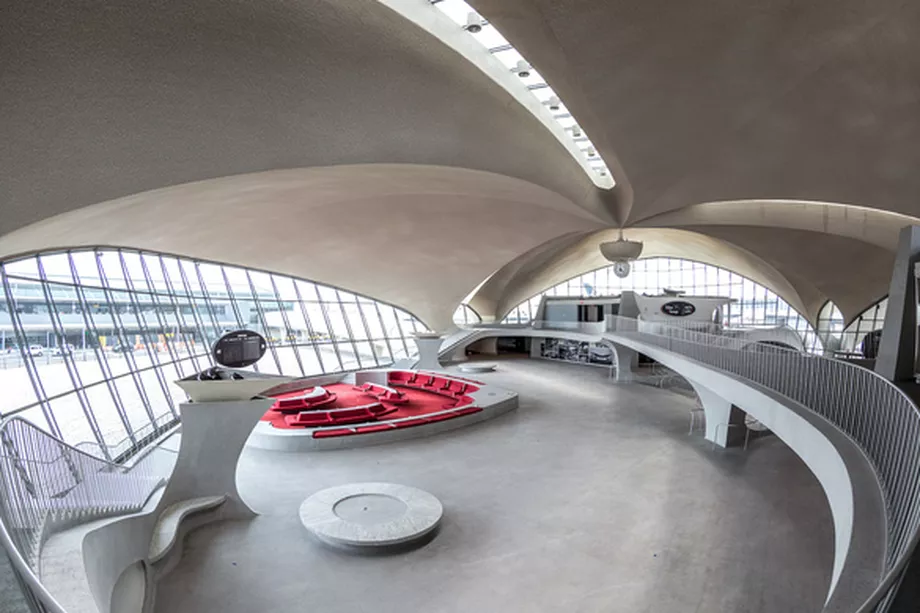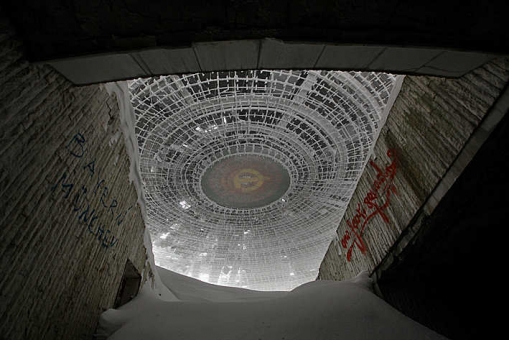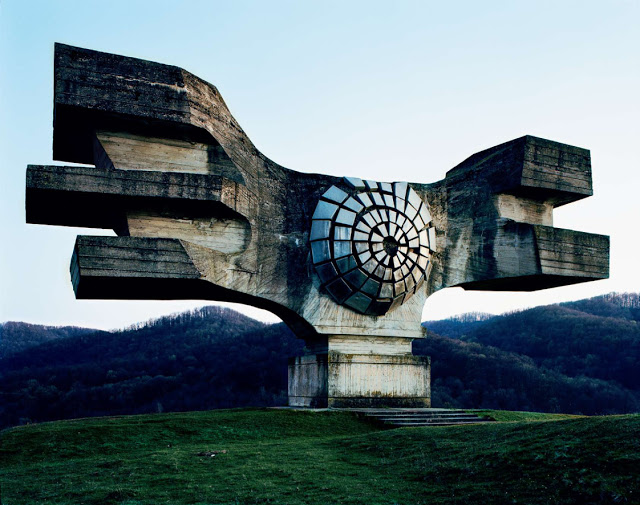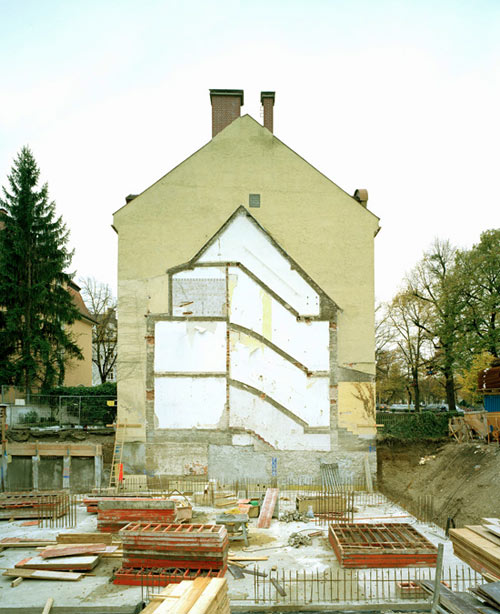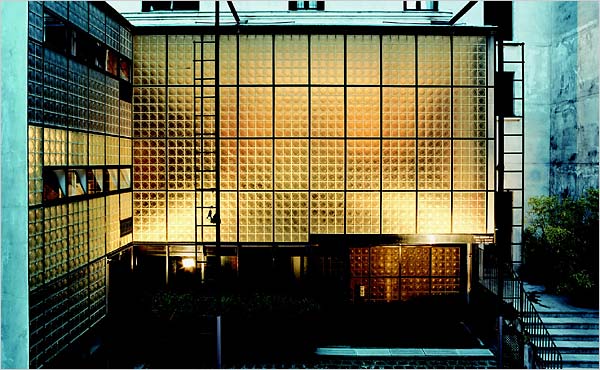Things tagged architecture:
Explore the TWA Terminal, a Pristine Time Capsule From 1962
Photographer Max Touhey was granted access [to Eero Saarinen’s 1962 terminal at John F. Kennedy International Airport]. That much free time inside the historic, beloved landmark is hard to come by—especially with a camera in hand—given that it has been off limits to the public since 2001.
How can we build skyscrapers without throwing cities into shadow?
Something I’ve been thinking about for a while. One solution:
There are around 250 tall towers currently planned for London’s skyline. From afar, they’ll probably look great. But unless they’re planned carefully, they’ll start throwing shadows across ever-growing swathes of London.
So one local architecture firm is offering a solution. Using computer modelling, they’ve figured out a design which would reduce the shadows cast by two theoretical towers by as much as 60 per cent.
Walking City
Winner of Golden Nica at Ars Electronica 2014
Referencing the utopian visions of 1960’s architecture practice Archigram, Walking City is a slowly evolving video sculpture. The language of materials and patterns seen in radical architecture transform as the nomadic city walks endlessly, adapting to the environments she encounters.
Close Quarters on the High Line
Steven Kurutz in the NYT:
Visitors to the High Line often marvel at the panorama the elevated park affords: open-sky views across the Hudson River, an unbroken sightline up 10th Avenue to Midtown and beyond. But in recent months, in a section of the High Line around 23rd Street, a more intimate, domestic cityscape has emerged.
Where the park widens to form a seating area with bleachers and a lush lawn, several apartment buildings rise up and enclose the space on either side. Three are newly constructed glass and steel towers that just began filling with residents, and the most prominent of them, the architect Neil M. Denari’s sleek HL23, is so close it’s as if parkgoers could walk right into one of the multimillion-dollar apartments.
Forget Your Past
I first heard about the Buzludzha monument (pronounced Buz’ol’ja) last summer when I was attending a photo festival in Bulgaria. Alongside me judging a photography competition was Alexander Ivanov, a Bulgarian photographer who had gained national notoriety after spending the last 10 years shooting ‘Bulgaria from the Air’. Back then he showed me some pictures of what looked to me like a cross between a flying saucer and Doctor Evil’s hideout perched atop a glorious mountain range.
I knew instantly that I had to go there and see it for myself.
25 Abandoned Yugoslavia Monuments that look like they're from the Future
These structures were commissioned by former Yugoslavian president Josip Broz Tito in the 1960s and 70s to commemorate sites where WWII battles took place (like Tjentište, Kozara and Kadinjača), or where concentration camps stood (like Jasenovac and Niš). They were designed by different sculptors (Dušan Džamonja, Vojin Bakić, Miodrag Živković, Jordan and Iskra Grabul, to name a few) and architects (Bogdan Bogdanović, Gradimir Medaković…), conveying powerful visual impact to show the confidence and strength of the Socialist Republic.
The house that used to be there
From Marcus Buck, imprints of demolished houses left on other houses.
Via kottke.org.
One tiny apartment, dozens of rooms
Hong Kong architect Gary Chang has renovated his tiny apartment four times since he’s owned it. The most recent renovation is called “The Domestic Transformer”.
Mr. Chang hopes that some of his home’s innovations might be replicated to help improve domestic life in Hong Kong, which has been troubled in recent years. The population grew by nearly a half-million in just the last 10 years, and between 2003 and 2007, reports of new cases of child, spousal and elder abuse nearly doubled, something social workers attribute in part to new social pressures caused by the city’s ongoing shortage of space.
“It’s a big problem,” Mr. Chang said. “Killing each other is not uncommon.”
“People feel trapped,” he said. “We have to find ways to live together in very small spaces.”
In Mr. Chang’s solution, a kind of human-size briefcase, everything can be folded away so that the space feels expansive, like a yoga studio.
The wall units, which are suspended from steel tracks bolted into the ceiling, seem to float an inch above the reflective black granite floor. As they are shifted around, the apartment becomes all manner of spaces — kitchen, library, laundry room, dressing room, a lounge with a hammock, an enclosed dining area and a wet bar.
Via kottke.org.
Beijing Cubism: How ETFE Revolutionized the Bubble
ETFE is temperature-resistant, lightweight (1/100th the weight of glass), recyclable, non-toxic when exposed to flame (it actually shrinks away from heat, thus helping to vent smoke out of a burning building), highly insulative, non-porous, and non-stick. Even better, its high-tensile strength makes it easy to manipulate—it can be spun into thin sheets for ease of transport then inflated on-site to create the “pillow” effect of the Aquatics Center walls. It can also be finished in varying degrees of translucence—as transparent as glass or opaque as glass bricks.
Via at cityofsound.
Front Inc
An article in the New York Times on facade engineers Front Inc. They are responsible for engineering the facades of The Seattle Public Library, the Toledo Glass Museum, the New Museum of Contemporary Art in New York and the CCTV Building in Beijing amongst others.
Very poorly written article, but interesting subject.
Via Super Colossal.
The Best House in Paris
Posted by Nicolai Ouroussoff to NYT > Arts.
This effect was amplified by the play of light and sound. By turning on and off the various floodlights outside, you could adjust the mood of the entire house. When the lights are dimmed, for example, the house becomes less theatrical, more tender. Voices too travel through the rooms, so that you are always faintly aware of the presence of the other.
It wasn’t until we arose the next morning, however, that we fully understood Chareau’s choreography. The bathroom floor is raised in certain areas so that as we crossed it, we could catch occasional glimpses of each other before suddenly dropping back out of view.
